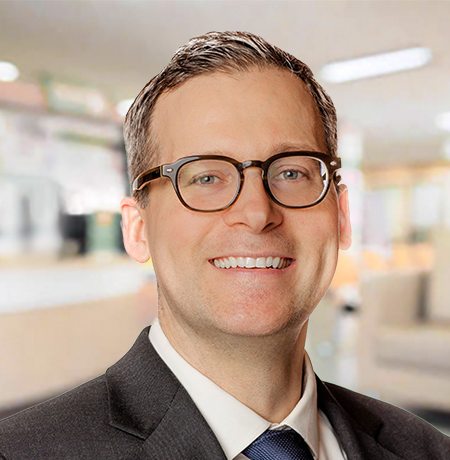
On October 4, 2021, Jefferson Health and Einstein Health Network in Philadelphia finalized their merger and turned their full attention to integration of the two health systems through a process developed in partnership with Kaufman Hall. It is a significant undertaking, bringing together two multi-billion organizations, each with an academic component, with between 30 to 40 integration workstreams running simultaneously across the enterprise. Jefferson had invested heavily in a corporate services structure in recent years, while Einstein had two major facilities with separate businesses and will be converting to Jefferson’s structure.
In any post-merger integration, forging a common culture can be one of the most difficult tasks, whether the two organizations are creating a new organizational structure or, as in this case, one organization is adapting to the organizational structure of the other. A closer look at two of these workstreams—diversity, equity, and inclusion (DE&I) and real estate and facilities—illustrates the powerful role empathy can play in building a common culture within a newly combined organization.
Incorporating new voices
Einstein had just begun building a DE&I function within its health system and had worked with a consultant on developing recommendations. The merger with Jefferson enabled that process to move forward rapidly. Jefferson had already built out that function under the leadership of Lisette Martinez, executive vice president and chief diversity officer for Jefferson Health. Her team’s work closely fit the Einstein consultant’s recommendations.
Empathy is central to any DE&I initiative; at Jefferson, that connection is demonstrated through a “Put People First” value that emphasizes, among other things, being respectful by showing empathy and consideration for the feelings and rights of others, communicating openly and listening without judgment, and demonstrating civility.
Jefferson’s team was finalizing a DE&I blueprint for the organization at the time of the merger. It demonstrated the “Put People First” value by combining assessment work that Einstein and its consultant had completed with Einstein employees with Brave, Relevant, Authentic, Valuable, and Educational (BRAVE) conversations with Jefferson employees, faculty, and leaders that had been completed pre-merger. The Einstein assessment and BRAVE conversations formed the foundation for the blueprint, as well as a toolkit that has been introduced across the organization.
Jefferson’s Press Ganey Patient Experience Survey was also modified to ensure that the patient’s voice is heard on issues of diversity and inclusion. Patients are now asked how well staff respected their culture, race, or religion, and how well staff respected their sexual orientation and gender identity. Councils that oversee DE&I activities at all Jefferson divisions—now including Einstein—can get data on the patient experience and make appropriate interventions if needed.
“So much of this effort is just helping people understand how to connect with people different from you,” says Martinez. To that end, Jefferson has implemented mandatory training for everyone in the organization in such as areas as identifying discrimination and speaking up, uncovering implicit bias, accessing learning tools to manage bias, and learning how to become an inclusive leader. In addition, leadership at both Jefferson and Einstein have gone through cultural competency training, with the top 380 leaders at Einstein (director level and above) having completed the Intercultural Development Inventory.
Kelly Yeager, director of organization and staff development at Einstein, comments, “We needed a Jedi team for our DE&I work and there it was at Jefferson. The ease of the fit of Jefferson’s program at Einstein has been a big success. People now have a place to go to with concerns and they can see their voice reflected in the DE&I blueprint and toolkit.”
Keeping the monsters at bay
“We all can create our own monsters that inhibit effective integration and turn the process into an ‘us’ versus ‘them’ situation instead of a ‘we’ situation,” says Clayton Mitchell, senior vice president of real estate and facilities at Jefferson. Working with his partner at Einstein, Craig Sieving, vice president of facilities management, Mitchell has deployed several tactics to keep those monsters at bay.
There is an important personal aspect involved when an organization is acquired by a larger organization, Sieving notes: “What about me? Where will I stand after the merger?” To address these personal concerns, Mitchell did an early assessment of technical capabilities and competencies on the Einstein team to quickly identify skillsets that could fill gaps within the team at Jefferson. Knowing that there would be a place to work and grow in the new organization relieved much of the anxiety for Einstein team members.
“There’s a mistaken assumption that once a merger occurs, efficiencies can be realized right away. In fact, you may need more people in the initial term,” says Mitchell. “We’re adding many new services in areas such as sustainability, quality assurance, contracts, and acquisitions. We have to find efficiencies, but we also need new capabilities to achieve the benefits of scale.”
Although the merger plan clearly called for Einstein to adapt to Jefferson’s organizational model, successful integration cannot be a one-way street, with one side raining down ideas and processes on the other. “You have to avoid saying ‘what you were doing was wrong; I’m coming in with the right solution,’” Mitchell notes. Instead, the Jefferson team seeks out ideas and processes from the Einstein team that can improve the real estate and facilities team overall.
In his years of service with the U.S. Navy, Mitchell was introduced to Myers-Briggs testing. As part of the integration process, he has deployed Myers-Briggs to help team members understand how they can better communicate with each other. As a new team member, Sieving sees another advantage in the ability to make personal connections with other team members in Myers-Briggs breakout sessions. These outcomes help drive two primary goals Mitchell has for his team:
- Mindfulness about how other team members receive information and how best to communicate with them, and
- Joy in working with colleagues, which can help offset the stress of a demanding job.
Mitchell also credits the Jefferson team’s empathy for the impact of change on the Einstein team. In the years immediately preceding the merger, Jefferson’s real estate and facilities team had been going through its own transformation from a divisional model to a corporate services model serving the entire enterprise. Team members understood the anxieties that change can produce.
When asked about the benefits of the merger, Mitchell cites the new talent that his team has gained and the addition of a new thought partner to help with some of the heavy lifts the team faces in the wake of COVID, increasing competition, deferred maintenance issues, and aging infrastructure. Sieving sees a new partner with resources that will help advance Einstein’s mission to reach as many people as it can.
The success of a merger ultimately depends on the ability to successfully bring two cultures together into a unified team. This is always a challenging effort, but the experiences of the Jefferson/Einstein workstreams demonstrate that a little empathy can go a long way in building that connection.
Takeaways from the Jefferson/Einstein Experience
Empathy is critical to the successful integration of teams when two organizations merge. To ensure that empathy is part of the process, consider the following:
- Ask integration team leaders to reflect on their own experiences during times of change.
- Use tools that can help bring team members together and help them better understand one another, such as Myers-Briggs testing or cultural competency training.
- Alleviate anxiety by moving quickly to assess skills and identify roles for individuals in the new organization.
- Be open to new ideas and processes that can help improve the team’s performance overall.
- Make empathy a key component of the new organization’s values.









